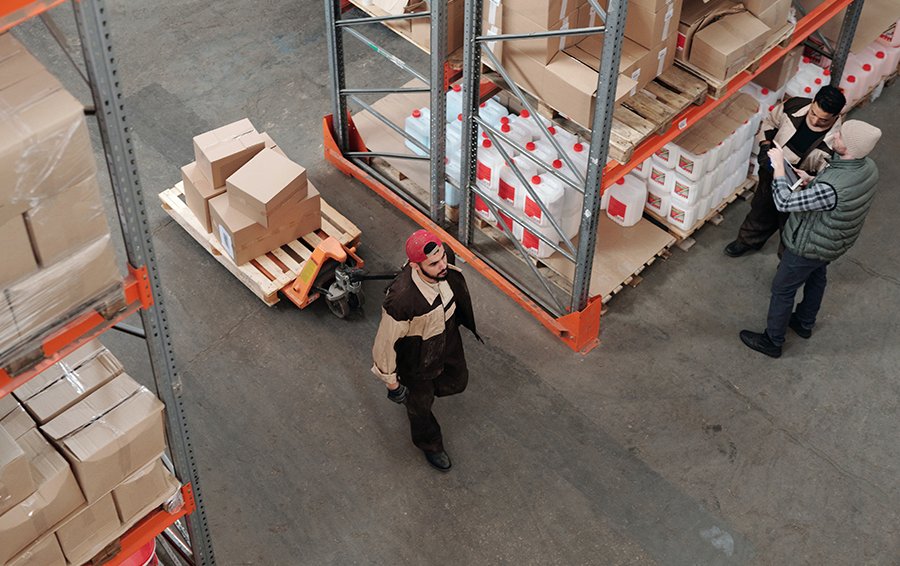The pandemic caused a closure to all major retail stores, and with no stores open to visit, customers quickly switched to shopping online. Around £141 billion was spent online by UK consumers alone last year, which accounted for more than 30% of all retail sales. Whilst e-commerce was already an up-and-coming sector with high predicted growth, the pandemic propelled the sector even further, with the latest predictions from IBM saying that the pandemic has accelerated the shift away from physical stores to digital shopping by roughly five years.
Umar Butt, Country Manager of Aramex UK, a global logistics provider explains how this changes the logistics dynamic. He says: “Now that consumers have become accustomed to getting everything they need at the touch of a button; it is difficult for them to go back. The growth in e-commerce is expected to continue, especially now that online operations and delivery is becoming more efficient and the journey from retailer to consumer becomes shorter.”
According to research conducted in August last year, 55% of respondents said that will shop digitally more frequently. Even with this rapid growth, customer expectations remain high, they expect fast, free shipping and competitive pricing.
Logistics Response
The continued growth within the e-commerce sector is creating a ripple effect on logistics, and logistics providers need to align their services to meet this growing demand. E-commerce presents a fundamental shift to the supply chain, instead of companies delivering cases and pallets to physical stores, it now means they have to get individual baskets of goods to the consumer’s desired locations, whether that is to their door, pick up collections or collect at stores.
Shifts in the Last-Mile
Umar further discusses what retailers and logistics providers need to do to address this new market. He adds: “As retailers look to enhance their direct-to-customer value proposition, they are investigating ways to reduce their delivery lead time. Consequently, retailers and brands are forward deploying a wider mix of stock keeping units to fulfilment centres. Firms are deploying their inventory closer to demand, which can come through their own operations, or by using the facilities provided by third-party logistics partners. As these home-based deliveries are more distribution-based activities, the growth of e-commerce involves an increase of warehouse footprints.”
There have already been developments to create their own type of facilities with e-fulfilment centres to service large volumes. In 2017, last-mile distribution centres accounted for 73% of the industrial real estate market. Having distribution hubs as close to the delivery locations is vital for high-speed operations.
According to UPS, 50% of parcel deliveries in the last-mile portion are e-commerce orders. As customers demand faster deliveries, and with the likes of Amazon offering prime next-day delivery, retailers are consistently looking to deliver faster deliveries in order to compete. Therefore, the last-mile distance needs to continue to shrink.
This shift can often result in a change in the composition of fleets and investment in smaller trucks and vans that provide the shorter, more frequent runs in the last mile. A recent study conducted by NAFA, found that 17% of logistics provides indicated a plan to adjust their fleet composition to favour last-mile delivery.
In addition, more retailers are offering free returns as a core value proposition and with no option to see the product first-hand it is critical, so last-mile volume in reverse logistics is expected to grow. Around 25% of all e-commerce purchases get returned, and if a company can’t make this process smooth, they will face losing customer loyalty. Bringing reverse logistics into the fold of freight forwarding means performance can be tracked and data can be collated on customer demand to optimise operations.
Going International
The UK is Europe’s current leader and biggest market for e-commerce, with 93% of Brits shopping online and this isn’t just purchasing within the UK, many e-commerce goods are imported from elsewhere. Even with goods being imported from abroad, customers still expect a fast delivery. The trade and customs processes between various countries can slow down shipments and create regulatory snags. Retailers need to work freight-forwarders that have all the correct documentation, especially when Brexit is taken into consideration and the likes of AEO certifications delivers smoother shipments.
Umar concludes: “E-commerce growth will continue to drive changes in the logistics sector and to deal with the growing demand, logistics companies will continue to innovate and begin to introduce technologies that will drive efficiencies and ensure a faster delivery process for retailers.”






